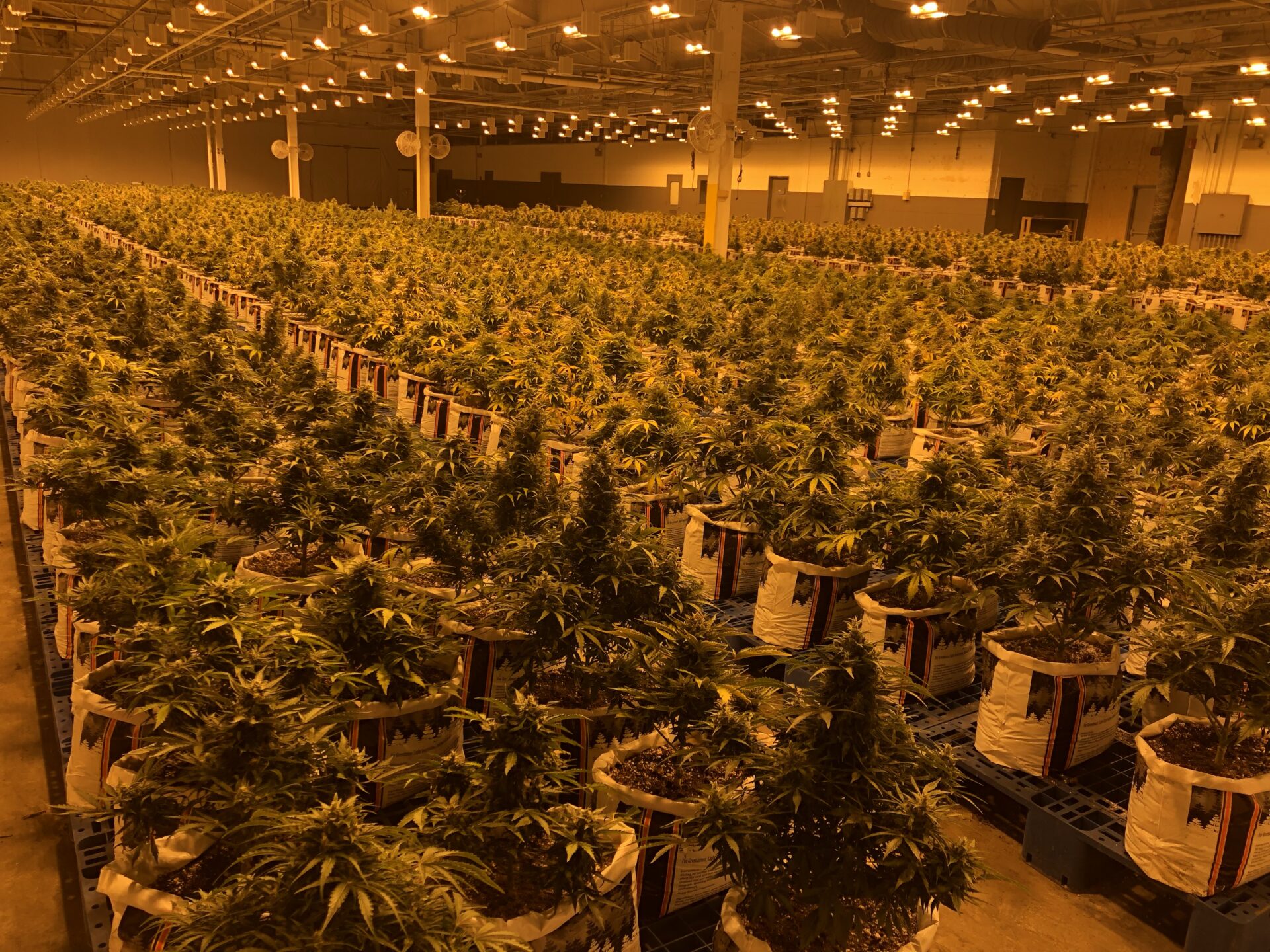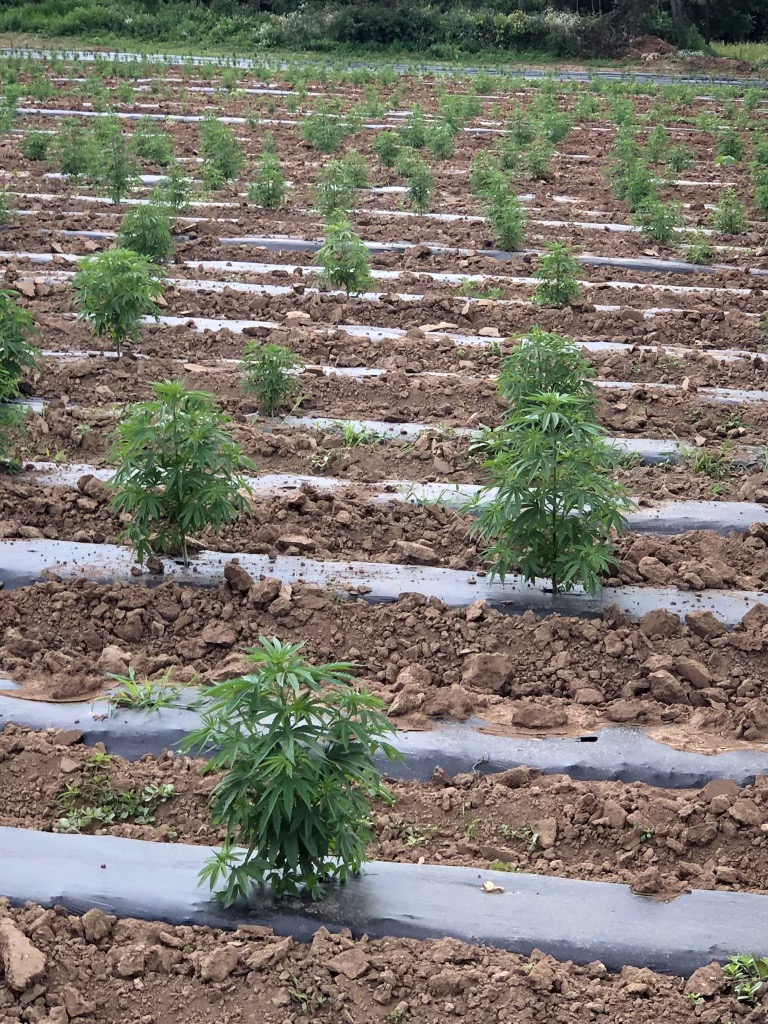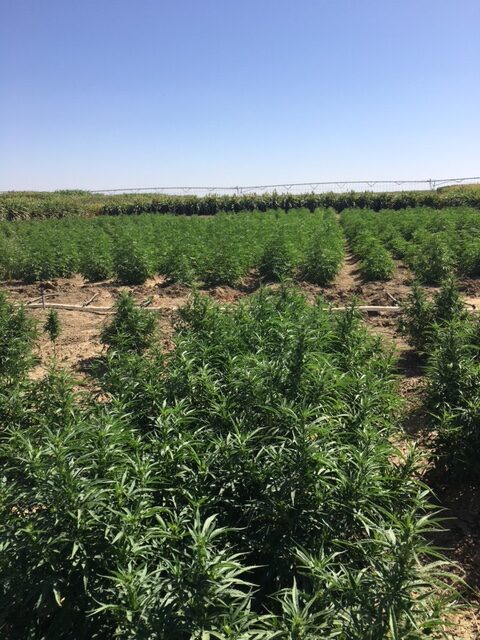
Fertilizer needs for hemp plants are similar to the needs of larger vegetable plants, such as tomatoes. As with other annuals, hemp plants require different nutritional needs during their various growth stages.
Nitrogen, Phosphorous and Potassium
In the beginning stage of the life cycle, hemp plants need a dominant nitrogen source. The plants also need a good starter fertilizer rich in phosphorous and potassium, according to James Knox, owner of KLR Farms. KLR is a multi-state business that grows, breeds and produces feminized hemp seeds and plants.
There are designer brands that Knox likes and uses. Mills Nutrients is one.
“Mills offers a mineral based and an organic for certified organic growers,” Knox said. There is a bio-mineral line for various stages of a plant’s life. Their products are designed and bottled in Holland, but they have retailers sprinkled throughout the northwest, including many in California.
BioAg is another brand that Knox uses. Located in Independence, Ore., BioAg specializes in fulvic acid. Knox especially likes Ful-Power®, a product which can be used as a foliar spray. It can also be used on clones and cuttings as a bare-root dip and to activate seeds. Ful-Power® is listed by the Organic Materials Review Institute (OMRI).
West Coast Horticulture is another fertilizer company that Knox uses and trusts. They supply liquid and dry organic fertilizers. The liquids are compatible with injector systems and drip irrigation and are processed from fermented plant materials and minerals. The liquid fertilizers contain bio-available forms of nitrogen, phosphorous and potassium. They also supply humic acid, microbial and bio-active compounds. West Coast’s products are compliant with the National Organic Program (NOP) and are registered as an Organic Input Material (OIM) with California Department of Food and Agriculture (CDFA) and listed with WSDA, ODA and OMRI.
Kelp Extract and Enzymes
Knox uses what he calls “high-value” kelp extracts. Nirtozime™ is a brand he mentions by name. It’s an organic biostimulant with growth hormones and micronutrients.
As far as enzymes go, Knox favors one called Enzymes Komplete™. It’s not a fertilizer, but rather an enzymatic cleanser to clean and recondition the growing medium. It can also be used as a cleansing agent for tools and processing machines to prevent disease and encourage healing. The product comes from a company out of Canada.
Fish Fertilizer
Non-hydrolyzed processed fish has the oils removed for use in cosmetics and the proteins removed for animal feed, Knox said. “It’s fish emulsion. It’s garbage. Literally, you’re left with the garbage.”
Use a high-quality fish fertilizer, Knox urged.
“Make sure it’s cold-processed, hydrolyzed whole fish broken down by enzyme digestion.” This process keeps all of the bio-active ingredients intact. It also supplies complex carbohydrates for the microorganisms, he said.
“All the amino acids are still intact. They are growth promoters – the overall general health additive. They are the building blocks of life.”
Silica
Silicon (silica)is an abundant mineral in many soils, but only the monosililic acid form is available to plants. High-quality silica can be used as a foliar feed or as an on-ground fertilizer, Knox said. For field growing, one of Knox’s favorite brands is Vitalize™ from Mills Nutrients. It’s a high-silicate nutrient that can be used throughout the life of the plant.
Silica helps toughen plants, which assists with disease and pest resistance.
“Silica helps regulate plant growth. It doesn’t allow plants to overgrow themselves, so they don’t get leggy and weak. The plant tissue itself is often literally harder for the pests to eat and chew,” Knox said. “Pests are a vector for disease.”
Anywhere a pest pierces or chews a plant is a weakened spot for disease to enter. Also, the feces that insects leave behind can encourage mold and mildew problems.
“Smart growers just simply cull those plants,” Knox said about any runts or seriously pest-infested plants.

Compost Tea
Knox has his own compost tea brewer. He uses an application of tea every one to two weeks for both indoor and outdoor growths.
“You want to use bacterial-dominant, not fungal-dominant,” Knox said about the compost tea recipe he uses. “Bacterial-dominant is aggressive and works quickly for annual crops such as hemp. It breaks down the organic and non-organic matter by eating it and pooping it out.”
Fungal-dominant teas take longer to work, which isn’t as beneficial to an annual crop.
Endomycorrhizae
Endomycorrhizae can be used in seedling mixes or to water in newly transplanted seedlings or cuttings.
Knox likes VAM®, another BioAg product. It has seven species of granular arbuscular mycorrhizal fungi, which aids in plant and root growth. It can be used in a variety of ways, including as a dry broadcast in outdoor grows, or added to water or other liquid for hydroponic, irrigation and hand-watering applications. Use it for seed treatments, cuttings and reinforcement after using compost tea.
“It’s the industry’s best mycorrhizal,” Knox said.
Knox, who grows under cover in Illinois, and outdoors and under cover in Oregon, uses all of the above fertilizers and amendments on his indoor crops.
Chicken Manure
“Designer brands aren’t always applicable to large scale growers,” Knox acknowledged.
For plants grown outdoors on a larger scale, Knox suggests PotentGrow™. The company is headquartered out of Tangent, Ore. The product that Knox uses is a 5-2-2 chicken manure pellet.
“It’s my favorite for outdoor production,” he said. “It’s a pellet that is broadcast in the field. Besides the boost in nitrogen, it has organic matter and offers beneficial biology to soils. The microbial fungal blooms overnight.”
Boosts
Knox uses more phosphorous during heavy growth periods and during transition – when days grow shorter and trigger plants to flower. “When plants are responding to light change,” Knox said. “Indoors, we trigger that with our lights, of course.”
He gives his plants a boost of extra potassium at the end of their life cycle, right before harvest, when the plants are bulking and ripening.

Other Insights
Ari Gamboa, of ERB Company (erbholdings.com) and partnering with KLR Farms (klrfarms.com), is in his third year of growing hemp.
“I’ve been helping James (Knox) grow hemp seed the last three years,” Gamboa said.
Prior to that, Gamboa spent six years growing marijuana for the regulated medical cannabis market. He’s grown cannabis and/or hemp crops in Colorado, Oregon and Wisconsin. Gamboa harvested 30,000 hemp plants in Wisconsin this past fall. “We crushed it!” he said about the harvest.
When starting plants from cuttings, Gamboa prefers Clonex Rooting Gel™. Along with rooting hormones, Clonex Rooting Gel™ also has minerals and trace elements to feed new roots.
When transplanting hemp plants, Gamboa first dusts the planting hole with Azos™, a nitrogen-fixing bacterium, to promote vegetative growth and a healthy root system.
As far as fertilizer during the growing season, “You just have to get a trusted nutrient,” Gamboa said. “As plants start flowering, drop the nitrogen and start raising the P and K.”
At the end of the flowering cycle, and two weeks before harvest, Gamboa flushes the hemp roots with plain water. “It will shock them a little and add some color to the plants,” he said.





